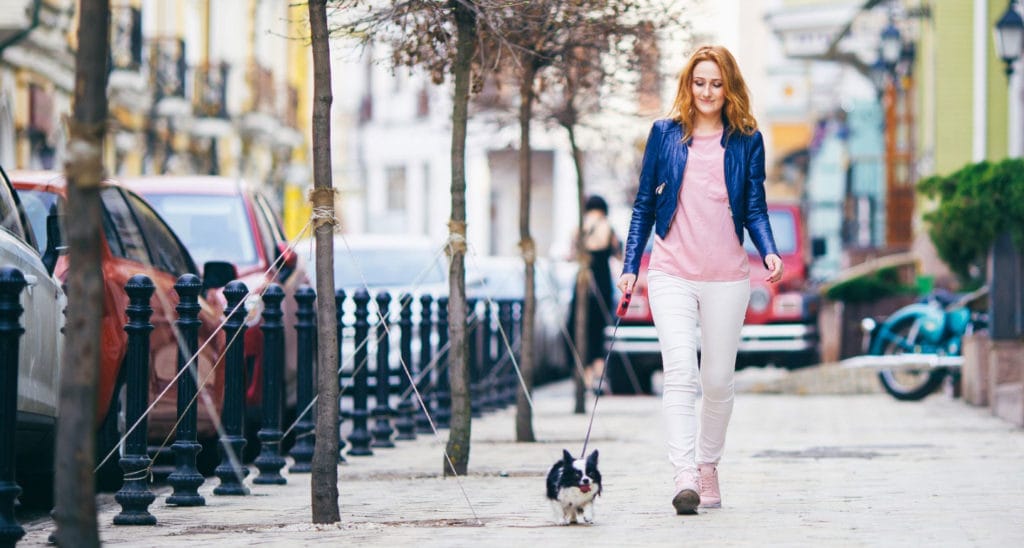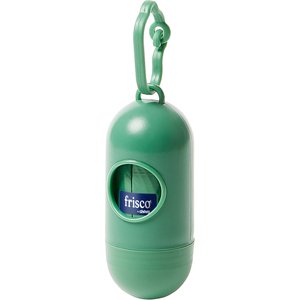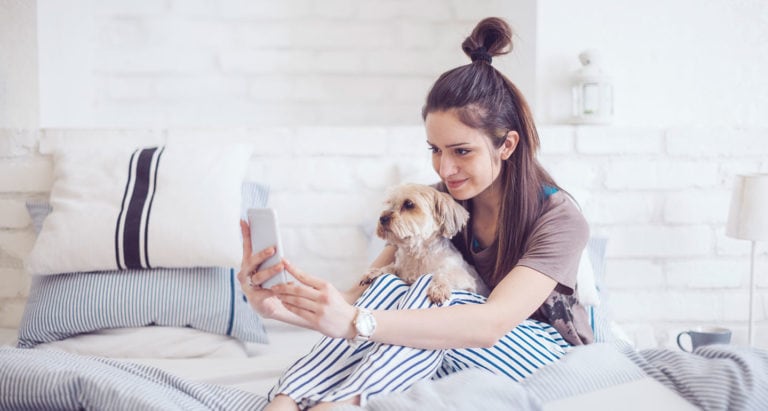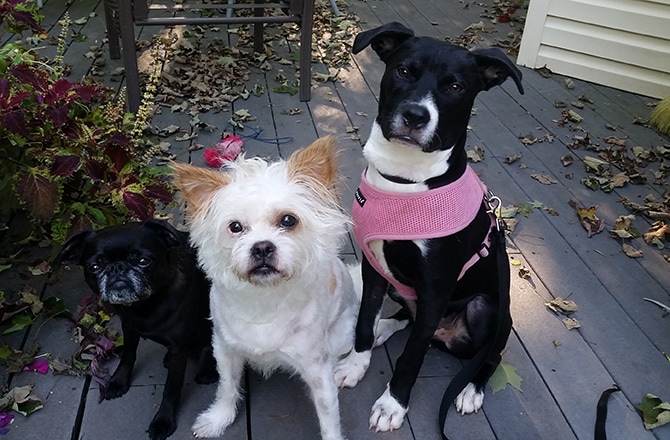A common misconception is that dogs can’t be happy living in an urban environment. However, keeping dogs in the city just means getting creative when it comes to their daily routine. Besides coming up with ways to keep your pet entertained, fit and happy, you also have the responsibility of being respectful of your neighbors.
Here are just a few tips for urban pet parents to help make living in the city easier for you and your four-legged friend.
Avoid Hot Pavement
As a pet parent, you’re responsible for helping your pet navigate hazards. Hot pavement is one hazard pet parents often overlook. The pavement can get incredibly hot during summer months, making it painful for your pup to walk on. Put your hand on the pavement for a quick temperature test. If it’s too hot to keep your hand on, it’s too hot for your pup to walk on. To avoid damage to your pup’s paws, consider dog booties or a dog stroller. Try to walk them in shady areas, or during the cooler parts of the day, like the early morning and evening.
Get an Apartment Dog
Size doesn’t always dictate whether a dog is a good fit for city living. Apartment dogs can’t have too much energy, which many small breeds have. The best apartment dogs are quiet, low energy, good around people, and can stay calm indoors. Breeds that make good city dogs include the Affenpinscher, American Eskimo Dog, Australian Terrier, Basset Hound and Beagle—just to list a few.
If you do choose a small breed dog for your apartment pup, make sure you are keeping him happy with plenty of dog treats and belly rubs, as well as interactive toys that’ll occupy his time and expend any extra energy he has built up.
Address Your Pup’s Potty Needs
One of the most important rules of keeping a dog in the city is picking up after her. Frisco Dog Poop Bags and Dispenser makes this easier for pet parents. This dog poop bag dispenser comes with 15 cucumber melon scented bags, and a handle you can clip onto your purse or keychain.
Another benefit of living in the city is your access to a wide range of dog-walking and pet-sitting services. City dogs need outdoor exposure, which can be challenging for working pet parents. Take your time to find a dog walker or pet sitter you trust. It may take more time upfront, but it will pay off when you can focus on work knowing your pup is being treated well.
If you choose not to use a dog walker, you can consider using the Wee-Wee Patch Indoor Potty, which will allow your dog to go potty during the day while you are at work. It has artificial grass so that it gives the illusion of a patch of grass for your dog to use.
Get to Know the Dog Park Scene
Urban dwellers should get to know their local dog parks. If you live in the city, chances are you’re located near one of these gems. Dog parks provide a great way to socialize city dogs. It’s the perfect place to introduce your four-legged friend to different types of breeds and personalities—and an opportunity for you to make some new friends, too. “Look for a place your dog can enjoy a safe off-leash run, which will make the experience even more enjoyable for him,” suggests Karen B. London, PhD, Certified Applied Animal Behaviorist and professional dog trainer.
Keep Your Dog Leashed
You may feel comfortable walking your dog off a leash, but in many U.S. cities, that’s against the law. When bringing up a pet in the city, you must be mindful at all times to help your furry friend avoid hazards. Keeping them on a leash like the Halti Dog Headcollar keeps your dog safe from running into traffic, or getting into an altercation with another dog. Keeping your dog leashed is good for their safety, but it’s also good pet parent etiquette that your neighbors will appreciate.
Ask Before Letting Your Dog Say Hello
As a pet parent who’s open to interaction, you may find it strange when an owner pulls their dog away. Don’t let this put you on the offensive; there are multiple reasons why someone may not want your dog to interact with theirs. They may have been recently bitten, come from a background of abuse, are sick or not dog-friendly. It’s in the best interest of your dog’s safety, and the other dog’s, to ask an owner first before letting your dog say hello. Instead of impromptu hellos, “Make playdates for your dog with other socialized pups,” London suggests.
Stop That Barking
Owners of apartment dogs need to be extra mindful of dog barking. In most cases, all that separates you from your neighbor is a thin sheet of drywall. Loud dog barking can damage relationships with your neighbors and your landlord. If the dog barking sounds loud to you, chances are it sounds just as loud to your neighbor across the hall.
Dogs bark for many reasons, including boredom, fear, anxiety and hunger. If your dog is finding apartment living boring, try dog interactive toys and feeders to help keep their minds challenged, like the Kong Classic Dog Toy. “Give your dog more mental exercise with mind-engaging activities such as enrichment puzzles, new toys, visits to new places, and learning new skills and tricks,” says London. Keep your pup fed and hydrated during the day with an automatic food and water dispenser to prevent barking from hunger or thirst.
Learn how to train a dog not to bark.
Crate Train
Crate training is an important part of raising apartment dogs, especially when you are away at work during the day. Choosing the right dog crate is essential. Your dog should be able to turn around, stand up and lie down without feeling cramped. Dogs should also feel secure and comfortable in their crates.
The Frisco Fold & Carry Double Door Dog Crate comes in plenty of sizes and has a divider panel so the crate can grow with the dog. If your dog has separation anxiety, or is just a relatively fearful pup, then you should consider a plastic crate like the Frisco Plastic Kennel. This cozy crate acts as a den-like hiding spot, making your dog feel safe and secure. For those with apartments where space is limited, the Firstrax Petnation Port-A-Crate E Series Indoor & Outdoor Pet Home is a great option, as it can be folded up and easily stored while not in use. This crate is not recommended for puppies or dogs that are not accustomed to being crated, though, because the fabric can be chewed and scratched through.
It’s important to make sure your dog does not see the crate as a punishment, but as a safe spot and cozy home. Never use the crate for punishment, and always give rewards when your pet goes into their crate. Consider giving them a treat-filled KONG when you put them in their crate and are preparing to leave for the day. This will distract them from the fact that you are leaving and act as a positive reinforcement so they’ll look forward to the next time you need to put them in the crate.
Ease Separation Anxiety
Separation anxiety in dogs can lead to a variety of bad behaviors, including urinating indoors, chewing and barking. A move to the city is a big deal, and can cause anxiety in dogs. Fortunately, there are many ways to address separation anxiety in dogs. Specially formulated calming dog chews can help calm and relax dogs battling separation anxiety. Cat diffusers and calming collars can help reduce anxiety in cats.
Get Your Pet Registered
One responsibility urban pet parents overlook is registration. Pet registration is an important part of city living. Register your pet with the city government, and get them licensed. Failing to license your pet could hinder any chance you have of getting pets back if they get picked up by the pound. It could also get you in trouble with the law. Pet registration costs an average of $10-$20 for a dog, and needs to be renewed annually. Pet parents can face a fine of $25 for an unlicensed pet, and be required to pay a late fee during registration.
City pets can live rich and fulfilling lives that are just as good as their suburban counterparts. With a little creativity, and some know-how, you can ensure your pet loves the city just as much as you do.
Michelle McKinley is dedicated to creating informative pieces that help pet parents train, care for and love their cuddly companions. She operates a digital ad agency providing content to enterprise and small businesses. As a writer for Chewy, Michelle delights in sharing tips and techniques that strengthen the relationship between owner and pet. She works with experienced veterinarians, knowledgeable pet behaviorists and pet brands to bring the best in pet to readers.
Share:




















